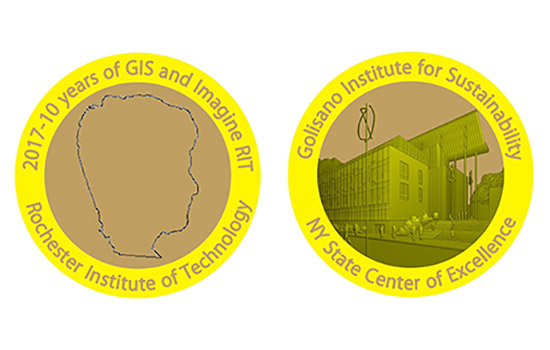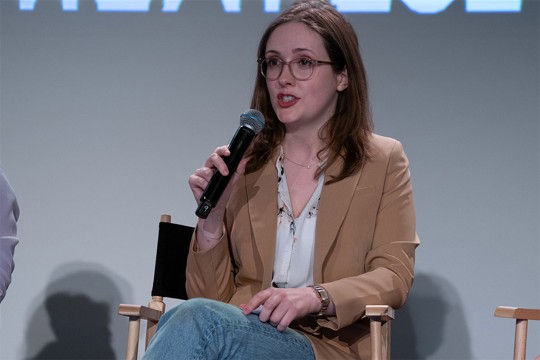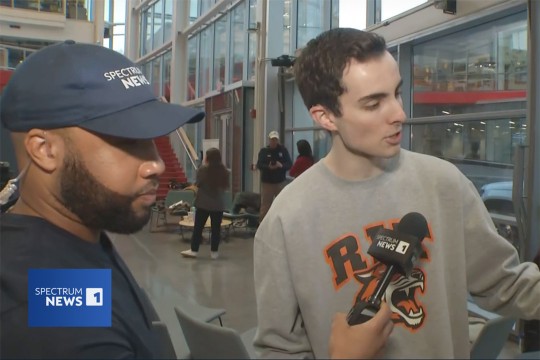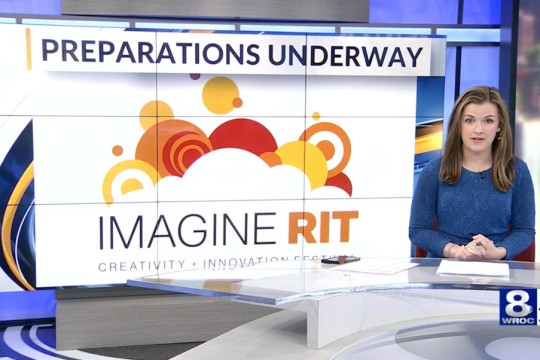Glimpse into the future of digital manufacturing
Visitors to Sustainability Hall exhibit can walk away with a personalized, commemorative coin
Visitors can get a glimpse of what’s in store on the manufacturing horizon when they stop by the fourth floor of the GIS building’s Green Place zone—and take home their own personalized souvenir of the festival’s 10th year in the process. The concept artwork provided for the coin was generated by CoinsforAnything.com, with the faial profile generated and added by GIS.
Manufacturing is becoming more and more reliant on digital technologies. In the not-so-distant future, digital simulations and computer processing will be seamlessly integrated into more traditional manufacturing practices.
Visitors to the Imagine RIT: Innovation and Creativity Festival can get a glimpse of what’s in store on the manufacturing horizon when they stop by the fourth floor of the Golisano Institute for Sustainability (GIS) building’s Green Place zone. In the process, they will be able to take home their own personalized souvenir of the festival’s 10th year.
A team of GIS students, professors and researchers will demonstrate how digital manufacturing techniques can produce an Imagine RIT commemorative coin with a visitor’s profile machined directly onto it.
“We want to demonstrate a digital manufacturing process from order to production,” said Christopher Valant, a native of Rockville Centre, N.Y., who graduated from RIT in 2015 with a degree in physics. He was hired at GIS the same year.
According to Valant, the image taken onsite will be digitally enhanced to identify the outline of a person’s head and converted to machine code for a CNC mill. A CNC—or computer numeric control—milling machine is a piece of computerized equipment that can perform multiple tasks such as drilling and turning. The machine replaces the need for several individual milling machines and receives instructions by computer software commands known as numeric control. Codes then will be batched into groups of 10 for production before they are loaded onto the mill and the coins engraved. Another important aspect of the demonstration is Enterprise Resource Planning (ERP) software that will track coin production from order to delivery.
The overall concept of digital manufacturing is that products exist within a digital (computer) environment from requirements through design and manufacturing simulation, Valant said.
“Once products have been digitally proven out, they move into production,” he noted. “Processing in a digital environment reduces cost and time-to-market for new products.”
Valant said one of the biggest challenges has been removing any shadowing from the image—an issue that was not immediately obvious to the engineering team when it came up with the concept for the exhibit.
“If there are shadows in the picture, the computer software will identify these as part of the person’s outline,” Valant explained. “Needless to say, as engineers, we have learned a bit about photography and lighting.”
“Additionally, we will be taking pictures of a large variety of people and the code that was developed to create a single outline of their profile had to account for a number of variables,” he added. “The subtle features that make someone recognizable are important. It’s what makes us unique and we want these coins to show just that.”















